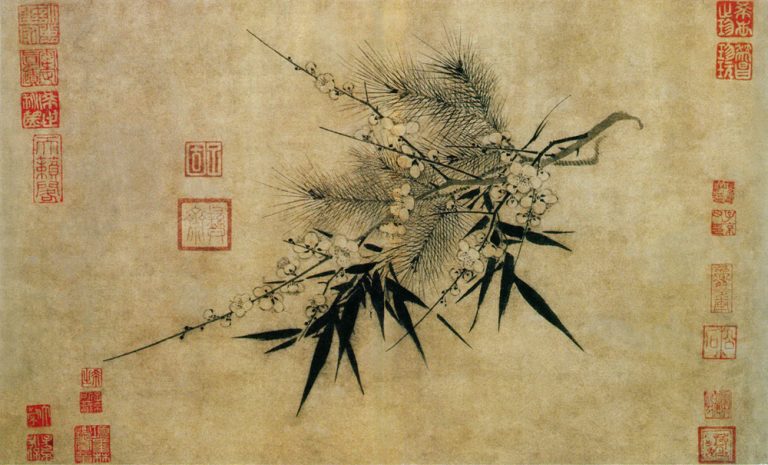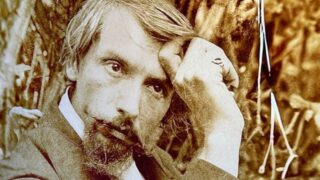Benedict XVI’s meditations on the arts were unashamedly theological and Catholic. Yet, they make a challenging reading for everybody.
by Massimo Introvigne
Article 1 of 3.


Benedict XVI (1927–2022) had a deep interest in the arts, yet his texts on the subject are less well-known than others. This series will present some of them, and largely let them speak for themselves.
Readers should bear in mind that these are unashamedly theological texts. They do not discuss art from the point of view of a “neutral” art historian, they are speeches by a theologian and a Pope intended for a Catholic audience. Yet, I am sure those who will read the texts will find them relevant for the broader question about the relationship between religion and art, even beyond the specific Catholic context.
On November 21, 2009, Benedict met with artists in the Sistine Chapel, addressing them in an extensive speech. As was often the case with him, the German Pope chose the date of 2009 to commemorate some anniversaries. These were the twenty-fifth anniversary of the proclamation of Fra Angelico (1395–1455), “a model of perfect harmony between faith and art,” as patron of artists; the tenth anniversary of John Paul II’s (1920–2005) Letter to Artists; and the forty-fifth anniversary of a similar meeting with artists in the Sistine Chapel, a “historic event” promoted by Paul VI (1897–1978).
Of Paul VI, Benedict XVI recalls some “daring expressions [to the artists]: ‘And if we were deprived of your assistance,’ he [Paul VI] added, ‘our ministry would become faltering and uncertain, and a special effort would be needed, one might say, to make it artistic, even prophetic. In order to scale the heights of lyrical expression of intuitive beauty, priesthood would have to coincide with art.’”


In the 2009 speech, Benedict XVI presented four important theses. The first was that at a time of crisis, marked by a general “weakening of hope,” only beauty “is capable of restoring enthusiasm and confidence.” But this particular enthusiasm that beauty gives manifests itself not so much as appeasement as, according to Plato’s (427–347 BCE) image, as shocking. “Indeed, an essential function of genuine beauty, as emphasized by Plato, is that it gives man a healthy ‘shock,’ it draws him out of himself, wrenches him away from resignation and from being content with the humdrum—it even makes him suffer, piercing him like a dart, but in so doing it ‘reawakens’ him, opening afresh the eyes of his heart and mind, giving him wings, carrying him aloft. [Fyodor] Dostoevsky’s [1821-1881] words that I am about to quote are bold and paradoxical, but they invite reflection. He says this: ‘Man can live without science, he can live without bread, but without beauty he could no longer live, because there would no longer be anything to do to the world. The whole secret is here, the whole of history is here.’ The painter Georges Braque [1882-1963] echoes this sentiment: ‘Art is meant to disturb, science reassures.’ Beauty pulls us up short, but in so doing it reminds us of our final destiny, it sets us back on our path, fills us with new hope, gives us the courage to live to the full the unique gift of life.”


The second thesis is that about beauty it is possible and legitimate to enunciate judgments. The current formula “beauty is a matter of taste” is often understood as an expression of absolute relativism according to which there would be no criteria of aesthetic judgment. On the contrary, according to Benedict XVI beauty is truly beautiful if it guides us to the true and the good. Otherwise it is a false or empty beauty, which sooner or later ends up spilling over into apologia for the ugly and vulgar.
“Too often, though, he said, the beauty that is thrust upon us is illusory and deceitful, superficial and blinding, leaving the onlooker dazed; instead of bringing him out of himself and opening him up to horizons of true freedom as it draws him aloft, it imprisons him within himself and further enslaves him, depriving him of hope and joy. It is a seductive but hypocritical beauty that rekindles desire, the will to power, to possess, and to dominate others, it is a beauty which soon turns into its opposite, taking on the guise of indecency, transgression or gratuitous provocation. Authentic beauty, however, unlocks the yearning of the human heart, the profound desire to know, to love, to go towards the Other, to reach for the Beyond. If we acknowledge that beauty touches us intimately, that it wounds us, that it opens our eyes, then we rediscover the joy of seeing, of being able to grasp the profound meaning of our existence, the Mystery of which we are part; from this Mystery we can draw fullness, happiness, the passion to engage with it every day.”
Third thesis: the ultimate criterion for understanding whether we are in front of true beauty, and at the same time for enjoying it in the right way, consists in asking ourselves whether the specific aspect beauty we are facing is a transparent sign that allows us to go up to Universal Beauty, which for the believer coincides with God. Beauty for beauty’s sake, like art for art’s sake, is not part of the Christian perspective. True beauty is “a path towards the transcendent, towards the ultimate Mystery, towards God. Art, in all its forms, at the point where it encounters the great questions of our existence, the fundamental themes that give life its meaning, can take on a religious quality, thereby turning into a path of profound inner reflection and spirituality.” Western art, after all, is incomprehensible without its relationship to “that immense deposit of ‘figures’—in the broad sense—namely the Bible, the Sacred Scriptures.”
Fourth thesis: in an age of crisis, if it is true that true art refers back to God and to the doctrine of which Christians are the custodians—and in this sense “art needs the Church” —it is no less true that without taking beauty as a starting point it is difficult for people immersed in the crisis to arrive at the true and the good. Thus, it is also true that “the Church needs art.” “One may speak of a ‘via pulchritudinis,’ a path of beauty which is at the same time an artistic and aesthetic journey, a journey of faith, of theological enquiry.”


Benedict XVI quotes Swiss theologian Hans Urs von Balthasar (1905–1988), whose theology particularly focused on the relationship between truth and aesthetics. “Balthasar begins his great work entitled ‘The Glory of the Lord: A Theological Aesthetics’ with these telling observations: ‘Beauty is the word with which we shall begin. Beauty is the last word that the thinking intellect dares to speak, because it simply forms a halo, an untouchable crown around the double constellation of the true and the good and their inseparable relation to one another.’ He [Balthasar] then adds: ‘Beauty is the disinterested one, without which the ancient world refused to understand itself, a word which both imperceptibly and yet unmistakably has bid farewell to our new world, a world of interests, leaving it to its own avarice and sadness. It is no longer loved or fostered even by religion.’ And he concludes: ‘We can be sure that whoever sneers at her name as if she were the ornament of a bourgeois past—whether he admits it or not —can no longer pray and soon will no longer be able to love.’ The way of beauty leads us, then, to grasp the Whole in the fragment, the Infinite in the finite, God in the history of humanity. [French philosopher] Simone Weil [1909–1943] wrote in this regard: ‘In all that awakens within us the pure and authentic sentiment of beauty, there, truly, is the presence of God. There is a kind of incarnation of God in the world, of which beauty is the sign. Beauty is the experimental proof that incarnation is possible. For this reason all art of the first order is, by its nature, religious.’ [German-Swiss novelist] Hermann Hesse [1877–1962] makes the point even more graphically: ‘Art means: revealing God in everything that exists.’”









